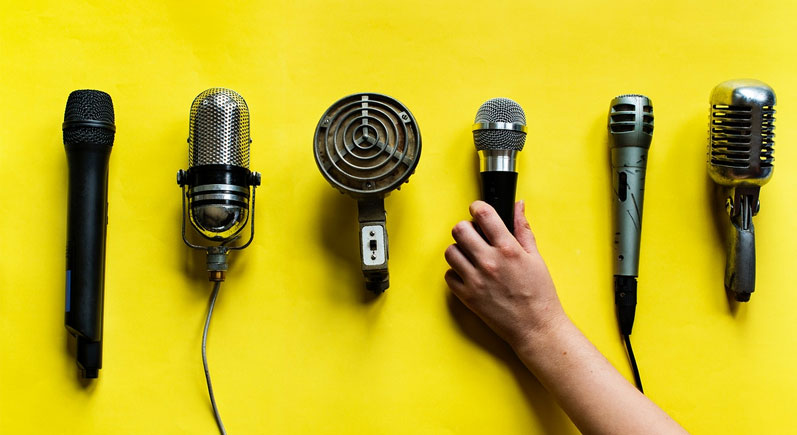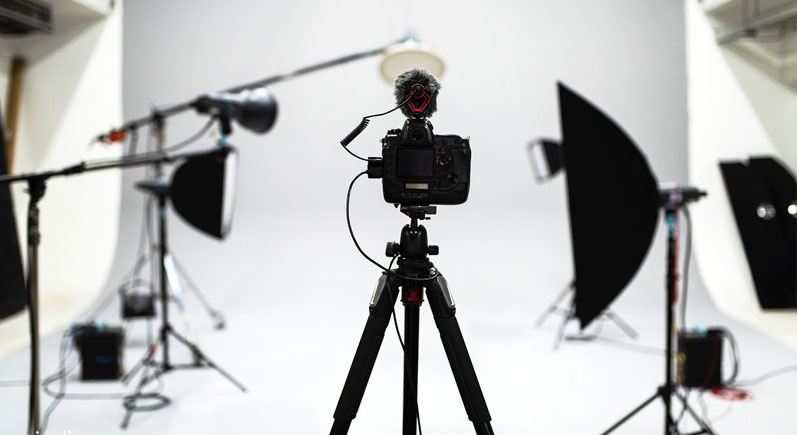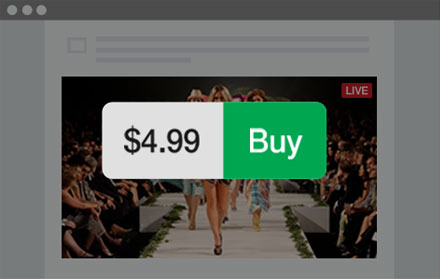Only a few years ago, professional live streaming services were the privilege of entertainment industry giants. Today, you can build your own web TV channel, create a Netflix-like platform, or build your own membership site in an afternoon without having to sacrifice your life’s savings.
In this article, we’ll talk about how you can monetize your live stream and avoid paying a commission.
Step 1: Make your broadcast look professional
Choosing the right camera
An HD camera is the norm these days. It’s safe to say that it is the minimum requirement for a well-polished live stream.
But there is also a new (cool) kid on the block — 4K Ultra HD. What 4K means is simply a better picture than HD. More pixels and more details. Who wouldn’t want that? Well, in reality, many devices do not support 4K yet, and most people’s internet connections are too slow to stream in 4K. However, 4K will very soon become the de facto standard. Some of the big events like the Royal Wedding and the World Cup have already been streamed in 4K.
Well, in reality, many devices do not support 4K yet, and most people’s internet connections are too slow to stream in 4K. However, 4K will very soon become the de facto standard. Some of the big events like the Royal Wedding and the World Cup have already been streamed in 4K.
So if you already have an HD camera — continue using it, but if you are just now picking out a new camera, you may be better off investing in a 4K camera.Finally, don’t forget to check and double-check your equipment: check your camera, check the lights, be sure all batteries are charged and that you have extras, tape down any loose cables to people don’t trip, etc. Configure your live streaming settings in advance and do a dry run with all your equipment. The reality is that live streaming is tricky and you can never be too prepared.

Turn your streams into professional-quality productions
Versatile and reliable, Epiphan Pearl-2 and Pearl Mini all-in-one video production systems make it simple to produce live streams that are sure to impress and engage your audience.
Get product detailsMicrophone shapes, patterns and types, explained
 If you’re broadcasting a music concert online, we assume you know your way with mics. Let’s focus instead on speaking events. Whether you’re doing a virtual conference, an online sermon, a webinar, or something similar, this chart will help you navigate the ocean of options. Mix and match microphone shape, pattern, and type to fit your specific needs. Pick one descriptor from each column to get your perfect mic (e.g. pencil-shaped directional condenser microphone).
If you’re broadcasting a music concert online, we assume you know your way with mics. Let’s focus instead on speaking events. Whether you’re doing a virtual conference, an online sermon, a webinar, or something similar, this chart will help you navigate the ocean of options. Mix and match microphone shape, pattern, and type to fit your specific needs. Pick one descriptor from each column to get your perfect mic (e.g. pencil-shaped directional condenser microphone).
| Shape | Pattern | Type |
|---|---|---|
|
|
|
Select your production equipment
At the very least, you will need a capture device, a powerful computer configuration and software to live stream from your camera on the web. If you have more than one camera and microphone, you will also need a switcher and a mixer.
Buying all of these elements separately could potentially give you more flexibility in the future, but it also means that you have to do the work of getting everything to work together. If you’re the type of person who prefers don’t-waste-my-time type of solutions, you might want to look into all-in-one live video streaming systems like Pearl-2. You just plug your camera(s) in and the appliance takes care of the rest. It’s portable, supports up to four 4K video sources (and six HD ones).
Set up your studio and test your equipment
Choose your shooting location thoughtfully (if you happen to have control over this). You want to have some distance between the camera, the subject and the background for some depth of field. Be sure the shot is nicely framed and well lit, invest in some studio lights. Even the best 4K camera in the world won’t be able to save a dark shot. Watch tutorials on setting up your live streaming studio to get a better understanding. Finally, don’t forget to check and double-check your equipment: check your camera, check the lights, be sure all batteries are charged and that you have extras, tape down any loose cables to people don’t trip, etc. Configure your live streaming settings in advance and do a dry run with all your equipment. The reality is that live streaming is tricky and you can never be too prepared.
Finally, don’t forget to check and double-check your equipment: check your camera, check the lights, be sure all batteries are charged and that you have extras, tape down any loose cables to people don’t trip, etc. Configure your live streaming settings in advance and do a dry run with all your equipment. The reality is that live streaming is tricky and you can never be too prepared.
Step 2: Distribute Your Live Stream
Free video platforms
When you’re just starting out with live streaming, platforms like YouTube and Facebook can be a boon because they allow you to reach the largest of audiences online. But, when it comes to monetization, it’s wise to think a few steps ahead.
What about monetization? What are your options?
Free streaming platforms like Facebook and YouTube currently only offer ads as monetization options. Even so, you need to have 1,000 subscribers and 4,000 hours of watch time in the past 12 months to even qualify to be a YouTube Partner. Moreover, unless you have millions of subscribers — the revenue from these ads is more in the range of beer money than a solid income stream.
Paid live streaming platforms
One of the biggest reasons to choose a paid live streaming platform is the control you gain over your content. You can publish your paid live stream on any channel you like, embed it on your website, and sell tickets to your live events. Compared to free platforms, paid platforms can help you generate more revenue from fewer customers in a shorter period of time.
Choosing a paid live streaming platform may sound overwhelming, but in essence, there are just two things to look at: how you will get paid and how much you will get paid.
Step 3: Get Paid
How you will get paid
Paid video streaming platforms offer a pay per view option, and it is by far the most effective setup. Pay per view means that your visitor buys a single ticket to view the content, right there, in the video player. Note that some platforms can offer additional monetization options, such as subscriptions, monthly passes, and so on. These might come very handy in the future, e.g. if you’re planning to make your live event recordings available on a membership site, you might want to look for a video platform that allows you to charge subscription fees.
Note that some platforms can offer additional monetization options, such as subscriptions, monthly passes, and so on. These might come very handy in the future, e.g. if you’re planning to make your live event recordings available on a membership site, you might want to look for a video platform that allows you to charge subscription fees.
How much you will get paid
Most paid platforms charge a commission on top of their service fee. They take a percentage of your pay-per-view ticket price. However, we found one live ppv streaming platform that lets you keep 100% of your revenue, called StreamingVideoProvider. It’s also worth noting that they offer lots of additional monetization options: from subscriptions, to video rentals, to much much more.![]()
Final Thoughts
Monetizing your live stream events is like solving any other business problem: you have to understand your requirements and try to plan for the long term. Think about your vision, the next milestone that comes after live streaming, and what monetization options you’ll need in the future. Leave some room for growth.
Do you have any questions about monetizing your live streams? Share them in the comments and we’ll do our best to help!

Hi there, do you have an article on what equipment is need for a lean streaming broadcast. I have the camera and laptop but software, additional hardware, etc. I want to start streaming live classroom lessons to an ulimited audience. I want PPV or subcription payments. Do you have some advice for me please.
Thank you